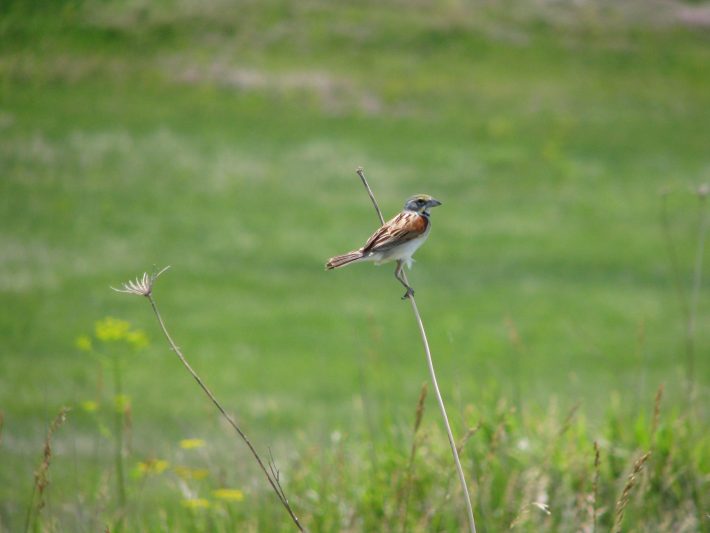New study on grassland-bird nest survival published in the Journal of Applied Ecology
National Great Rivers Research and Education Center press release
An article about grassland-bird nest survival by National Great Rivers Research and Education Center’s (NGRREC℠) Conservation Program Manager Justin Shew was recently published in the Journal of Applied Ecology.

The research was conducted as a part of Shew’s Ph.D. studies at Southern Illinois University Carbondale’s Cooperative Wildlife Research Laboratory. He earned his Ph.D. in December 2016.
“Our research demonstrated that tractor-based management, such as light-strip disking, and establishing native-grass practices on private grasslands enrolled in the federal and widely popular Conservation Reserve Program (CRP), can improve nest survival of multiple grassland bird species and communities.” Shew said. “However, habitat managers and conservationists must realize that when viewed from a multi-scale perspective (i.e. assessing a range of habitat factors from nest-site characteristics to landscape context), nest survival is often best predicted by unmanageable finer-scale habitat factors.”
Shew studied the nest survival of red-winged blackbirds and dickcissels, and two nesting communities (ground and above-ground nesters), relative to management and multi-scale habitat. This research is particularly important because many grassland bird populations in North America have been consistently declining over decades and properly guided management decisions may help alleviate these declines.
“We recommend grasslands be managed to provide a variety of nesting opportunities for birds and that agency staff promote grassland management and native-grass practices on private lands, especially within beneficial landscapes, that also foster within-field colonization and persistence of focal species,” Shew said.
As the NGRREC conservation program manager, Shew works closely with partners such as the Illinois Department of Natural Resources (IDNR) and the federal Natural Resources Conservation Service (NRCS), which both administer and support crucial private lands conservation programs in the state of Illinois.
His research is extremely relevant to the partners with which he works, especially the NRCS. In one of his roles, he manages and coordinates NGRREC’s Land Conservation Specialist program. The specialists are remotely stationed in several NRCS service center offices and assist NRCS and many private landowners directly with the Conservation Reserve Program. Therefore, his research will be directly communicated to NRCS partners and NGRREC’s LCSs for improved habitat management guidance for the benefit of wildlife, such as grassland birds.
“Dr. Shew’s published work is a very good example of how NGRREC uses science-based information to directly inform land and water conservation practices and policies,” said NGRREC Senior Scientist Richard Warner. “NGRREC’s Land Conservation Specialist program is directly benefitting many private landholders in the Lewis and Clark district, assisting them in achieving their goals while optimizing outcomes for land, water, and wildlife conservation.”
Read the full article (free to read for a limited time:
Shew JJ, Nielsen CK, Sparling DW. Finer‐scale habitat predicts nest survival in grassland birds more than management and landscape: A multi‐scale perspective. J Appl Ecol. 2019;00:1–17. DOI: 10.1111/1365-2664.13317
Media contact:
Louise Jett, Media Specialist, National Great Rivers Research and Education Center, Tel: +1 618 468 3220, Email: ljett@lc.edu
Like what we stand for?
Support our mission and help develop the next generation of ecologists by donating to the British Ecological Society.